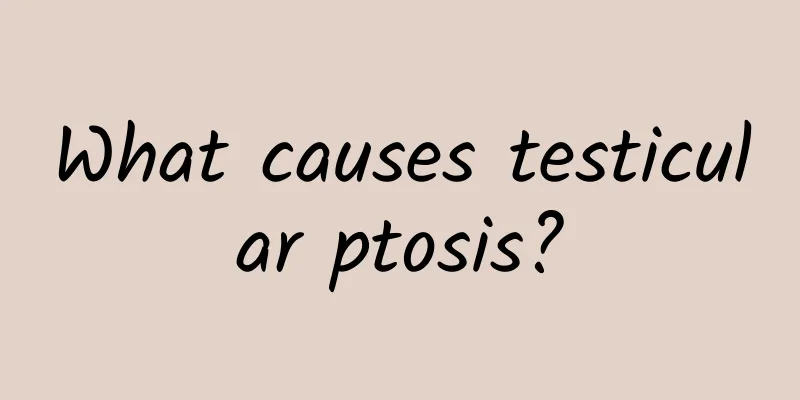What causes testicular ptosis?

|
Patients with orchitis will have testicular prolapse. Patients with varicocele or testicular tumors may also have testicular prolapse. If you have severe prostatitis or seminal vesiculitis, testicular prolapse is more serious. Testicular prolapse caused by orchitis is accompanied by symptoms such as testicular skin redness and testicular enlargement. The patient's testicular prolapse is particularly obvious, and there is also tenderness when getting off the testicle. Testicular prolapse caused by orchitis can be seen once or on both sides. Varicose veins lead to testicular prolapse, swelling of the scrotum on the affected side, local swelling and pain, which are often aggravated by fatigue and standing for a long time, and the symptoms are relieved or disappear after lying down and resting. Testicular tumors and scrotal testicular semen can also cause testicular prolapse. It may also be caused by other reproductive inflammations, such as prostatitis, seminal vesiculitis, etc. There are many reasons for testicular prolapse, such as infection, trauma, and tumors. It is also one of the common diseases in men's outpatient clinics. When patients describe their symptoms, the nature of their pain varies, such as bloating, throbbing, and knife-like pain, due to different types of diseases. Epididymis and spermatic cord lesions and inflammation in the scrotum often cause testicular prolapse. Lesions in other parts such as the bladder and prostate can also radiate to the scrotum and testicles, causing testicular prolapse. Therefore, determining the cause of testicular prolapse requires doctors to have rich clinical experience, carefully identify, and find the key to the disease. Acute non-specific orchitis can cause testicular ptosis, which often occurs in patients with urethritis, cystitis, prostatitis, prostatectomy, and long-term indwelling catheters. The infection spreads to the epididymis through the lymph or vas deferens, causing epididymal orchitis and testicular ptosis. Since testicular ptosis is mostly caused by inflammation, the treatment is mainly based on antibacterial and anti-inflammatory drugs. During the treatment, the patient should rest in bed appropriately and raise the scrotum. If pain is felt, local hot compress treatment can be performed. If abscess has formed, incision and drainage is the only feasible method. Broad-spectrum antibiotics should be selected for treatment of bacterial infection. |
<<: What causes prostate problems due to urine retention?
>>: What to do if the testicles are itchy
Recommend
Will drinking beer at night make you fat? 9 things to note when drinking beer
Beer is a kind of alcoholic beverage that many me...
Can I buy testosterone at a pharmacy?
Can testosterone be bought in pharmacies? Of cour...
There are small white spots on the penis
Men's genitals are often called lifelines, be...
What are anti-sperm antibodies?
In life, some couples have infertility problems, ...
Testicular traction surgery
Testicular traction surgery is a treatment for te...
What to eat after vasectomy to recover faster
Sterilization is a contraceptive method that can ...
What harm does prostate seminal vesiculitis cause?
Some patients may give up the treatment of prosta...
How to diagnose and test male gonococci
Male gonococcal infection is a common purulent in...
What are the tests for male infertility?
Nowadays, more and more people are suffering from...
What are the clinical symptoms of orchitis?
Orchitis is a very common male disease, but becau...
What are the dangers of circumcision?
Many men have the problem of foreskin being too l...
How can men prevent premature ejaculation?
No matter what the disease is, there are ways to ...
Itching of the skin on both sides of the male genitals
Men often have itchy skin on both sides of the ma...
Men's body fluids have several benefits for women
We all know that men will ejaculate semen when th...
Can circumcision enhance sexual performance?
I believe that in daily life, many male friends n...









